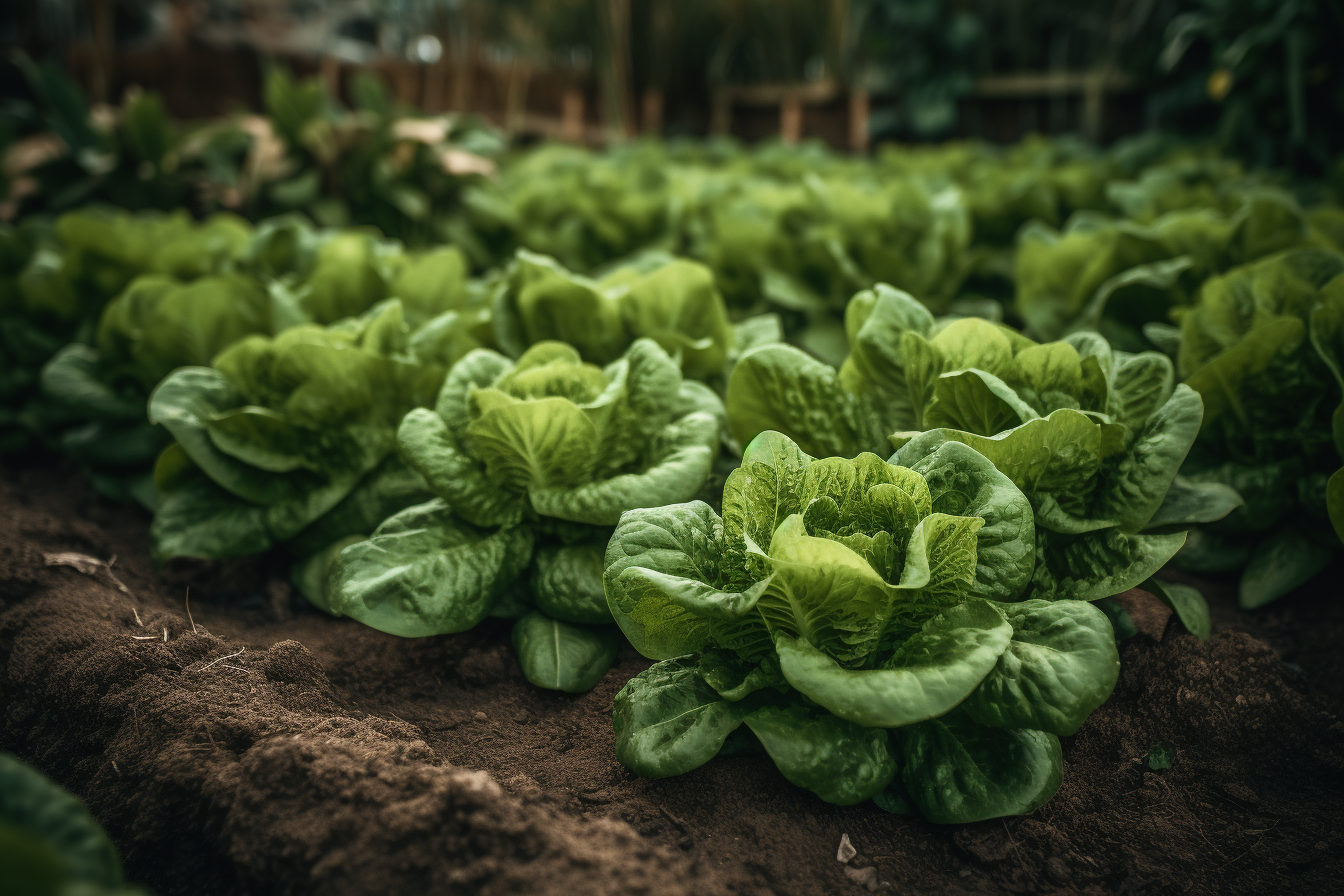Growing heirloom lettuce seeds can be a rewarding experience for any gardener. Not only do heirloom varieties offer unique flavors and textures, but they also preserve the genetic diversity of our food supply. Here are some tips for growing heirloom lettuce seeds in spring:
When to Plant Lettuce Seeds in Spring in the USA
Lettuce seeds can be planted in the spring as soon as the soil can be worked. In most parts of the USA, this is typically in March or April. Lettuce seeds can also be started indoors and transplanted outside once the weather warms up.
How to Plant Lettuce Seeds
There are several ways to plant lettuce seeds, depending on your preference and available space. Lettuce seeds can be planted directly into the ground, started indoors in pots, or grown hydroponically. Here are some tips for each method:
- Planting Lettuce Seeds Outdoors: Choose a location with well-drained soil and partial shade. Sow lettuce seeds thinly, about 1/4 inch deep, and keep the soil consistently moist. Thin the seedlings once they emerge, leaving about 6-8 inches between plants.
- Starting Lettuce Seeds Indoors: Fill a seed tray with potting soil and plant the lettuce seeds about 1/4 inch deep. Keep the soil moist and warm (60-70°F) until the seeds germinate. Once the seedlings have grown their second set of leaves, they can be transplanted outdoors.
- Growing Lettuce Seeds Hydroponically: Lettuce can also be grown hydroponically using a nutrient-rich water solution instead of soil. This method is ideal for small spaces and urban gardens. Follow the instructions provided with your hydroponic system for planting and growing the lettuce seeds.
Popular Lettuce Seeds Varieties to Grow:
- Bloomsdale Spinach: This variety of spinach has crinkled, dark green leaves that are tender and flavorful. It is easy to grow and can be harvested in as little as 37 days after planting.
- Collard: Collard greens are a member of the cabbage family and have a slightly bitter taste. They are high in vitamins and minerals and can be grown throughout the year in mild climates.
- Bibb Lettuce: Bibb lettuce, also known as butterhead lettuce, has a soft and buttery texture with a mild, sweet flavor. It is perfect for salads and sandwiches and is easy to grow in containers or in the garden.
- Arugula: Arugula has a peppery and nutty flavor and is commonly used in salads, pizzas, and sandwiches. It is easy to grow and can be harvested in as little as 21 days after planting.
- Iceberg Lettuce: Iceberg lettuce is a popular variety that has a crisp texture and a mild flavor. It is often used in salads and sandwiches and is easy to grow in the garden or in containers.
- Curled Cress: Curled cress has a slightly peppery taste and is often used as a garnish or in salads. It is easy to grow and can be harvested in as little as 15 days after planting.
- Buttercrunch Lettuce: Buttercrunch lettuce has a sweet and buttery flavor and a crisp texture. It is perfect for salads and sandwiches and can be grown in the garden or in containers.
- Mizuna: Mizuna has a slightly spicy taste and is often used in Japanese cuisine. It is easy to grow and can be harvested in as little as 40 days after planting.
- Green Oakleaf Lettuce: Green Oakleaf lettuce has a tender texture and a slightly nutty flavor. It is perfect for salads and sandwiches and can be grown in the garden or in containers.
- Mustard: Mustard greens have a slightly bitter and spicy taste and are often used in salads, soups, and stir-fries. They are easy to grow and can be harvested in as little as 30 days after planting.
- Black Seeded Simpson Lettuce: Black Seeded Simpson lettuce has a tender texture and a slightly sweet flavor. It is perfect for salads and sandwiches and can be grown in the garden or in containers.
- Swiss Chard: Swiss chard has a slightly bitter taste and is high in vitamins and minerals. It can be grown throughout the year in mild climates and is often used in salads and stir-fries.
- Cimarron Red Romaine: Cimarron Red Romaine has a crisp texture and a slightly bitter taste. It is perfect for salads and sandwiches and can be grown in the garden or in containers.
- Blue Curled Kale: Blue Curled Kale has a slightly bitter taste and is often used in soups, stews, and smoothies. It is easy to grow and can be harvested in as little as 50 days after planting.
- Prizehead Lettuce: Prizehead lettuce has a tender texture and a slightly sweet flavor. It is perfect for salads and sandwiches and can be grown in the garden or in containers.

Detailed Guides for Planting Vegetables, Herbs, Greens & Lettuce, Peppers, and Wildflowers:
At FarmerValley we offer detailed guides for planting vegetables, herbs, greens & lettuce, peppers, and wildflowers. These guides provide step-by-step instructions for planting and caring for your plants, as well as tips for getting the best results. Check our growing guides and plant your own non-GMO garden with confidence.
Planting non-GMO seeds is a great way to enjoy fresh and healthy vegetables and herbs while also knowing that you’re avoiding harmful additives. With these essential tips and top lists, as well as our detailed guides, you’ll be on your way to a bountiful harvest in no time.

